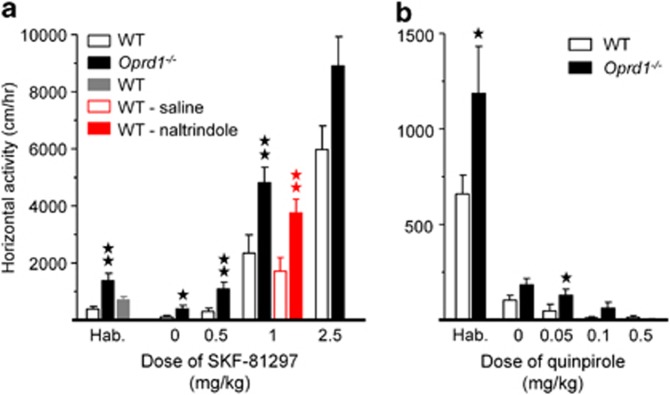Figure 4.
Locomotor activity under pharmacological challenge by dopamine receptor agonists is biased towards prominent activity of the striatonigral pathway in Oprd1−/− mice. (a) Mutant animals were more sensitive to the stimulant locomotor effects of the D1/D5 dopamine receptor agonist SKF-81297, for doses ranging from 0.5–2.5 mg/kg. WT mice injected with naltrindole (0.3 mg/kg) similarly showed increased sensitivity to the locomotor effects of SKF-81297 (1 mg/kg). (b) Oprd1−/− mice tended to be less sensitive to the inhibitory effects of the D2/D3 dopamine receptor agonist quinpirole on locomotion, at doses from 0.05–0.5 mg/kg. Mutant mice were more active during habituation than WT animals, in agreement with previous results (Filliol et al, 2000). Data are presented as distance traveled (mean±SEM) per hour. One star: p 0.05; 2 stars: p 0.01 (one-way analysis of variance). Hab.: habituation.

